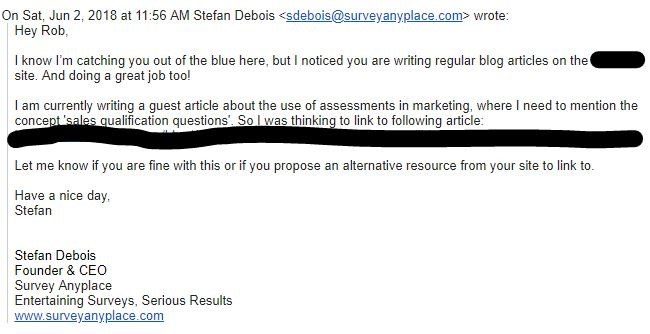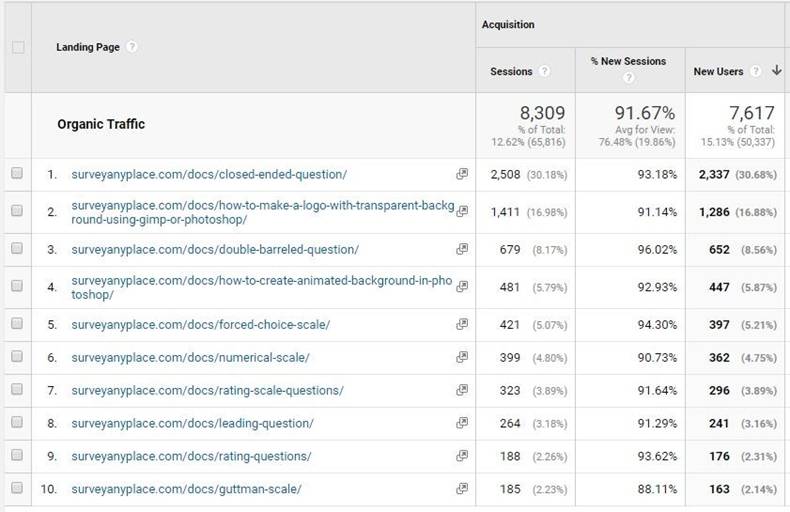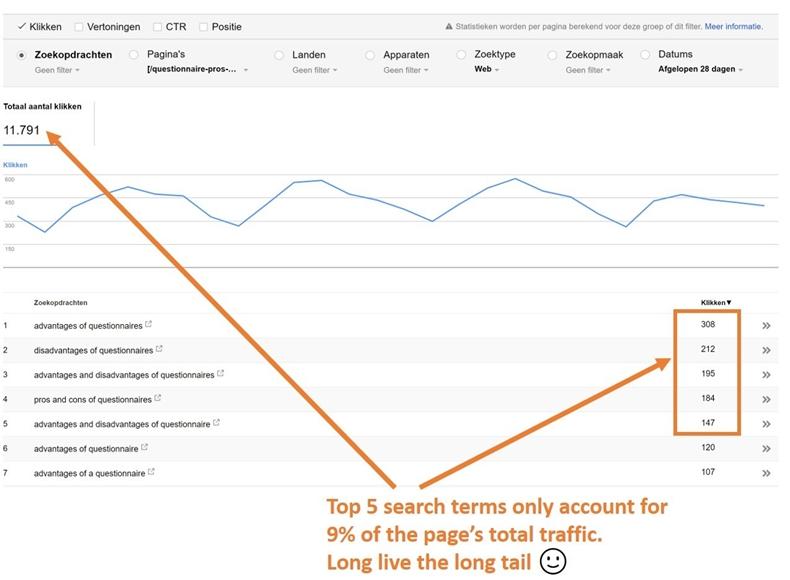Via the World Wide Web, you can potentially reach millions all around the globe as soon as your site goes live.
Unfortunately, that rarely ever happens.
The Web has become a highly competitive place, and every day it's becoming harder and harder to stand out online.
It can take buckets of blood, sweat, and tears to build up enough domain authority to generate a steady stream of traffic. But it doesn't have to be that way.
I've compiled five unconventional traffic-generating tactics discovered from growth-hacking. Here they are.
1. Utilize other sites
Just about any company can benefit from SEO. Early on, though, your website simply doesn't have domain authority to show up near the top for any searches. In other words, in the early stages, Google is not your friend.
Luckily, there are ways you can generate traffic without Google.
One old school tactic is guest-blogging. If you have 0 readers on your site, why write for yourself? Instead, go write a 3,000-word article for someone else.
"Nothing new under the sun" I hear your think.
And you'd be right! But here's the trick: Every time you write an article, keep track of every outbound link you include or mention; as soon as your guest post goes live, use it as an opportunity to start a professional relationship with the author of the article or product you linked to.
Don't overdo it, though. Your main focus should be on the reader, not on the potential authors you could reach. Every outbound link should provide value to the audience.
Just keep this trick in mind next time you're looking for a source to use. Reach out to the authors of those sources and pick those most likely to engage in a reciprocal, mutually beneficial relationship.
Congratulations! You now have a backlink to your site from the guest post. You are also on the radar of authors who will feel inclined to return the favor and link to you in future articles.
Here's just one example:

Guest-posting requires some effort, but the return compounds over time. And if you guest-post consistently, over time you'll be able to publish articles on larger sites and eventually become an authority within your space. So start pitching guest posts as early as possible.
Apart from guest-posting, you can also harness authoritative sites such as Quora, Medium, and Reddit. Create a post for those sites or reply to questions relevant to the keyword you want to rank for.
Being present on those keywords is good start, but going to extra mile to create a more thorough, higher-quality post than the competition will get you better results.
Tip: This guide on customer acquisition channels goes more in depth on how to achieve success with this tactic.
2. Create highly shareable, interactive content
One of the best ways to attract traffic is to create high-quality, shareable content. Unfortunately, that's easier said than done.
But contrary to what some people think, producing amazing content—the kind that people will eagerly share—is not guesswork, and it's certainly not luck. It's a combination of great storytelling, self-interest (theirs, not yours), and consistency.
Instead of writing yet another blog post, consider creating a piece of interactive content. You could even repurpose previous posts. Here are some of the benefits of using interactive content:
- Highly shareable
- More attention-grabbing than static content
- Better conversion than static conversion pages
One type that has been proven to be effective are quizzes.
Today, creating a quiz isn't as hard as it used to be. You don't need any coding or tech skills to create an engaging quiz. Most survey makers also provide quiz capabilities as well as ready-to-use quiz templates.
3. Build a glossary or knowledge base
Every business or niche has its jargon, abbreviations, and terminology. You could assume your target audience has a firm grasp of your jargon or vocabulary, or you could create a glossary or documentation page.
I suggest the latter.
Ideally, you set up a separate page to explain every popular term within your niche. Make a list of as many terms as you can think of ,and start writing a piece of content of around 300 words per term.
Give those pages some time to gain traction. Check back four weeks later; then, to attract even more traffic, make a dedicated blog post (1,000+ words) about the most popular terms.
Tip: 301-redirect the old glossary pages to the new ones to prevent two of your pages competing for the same keyword.
We've tried this tactic ourselves with great success. We never expected to get 2,500 visits per month from people looking for "closed ended questions". A total of 8,300 monthly visits isn't bad, either.

4. Don't be afraid of low-volume search keywords
When you first start out, you won't have the domain authority to rank for the big, high-volume keywords you want to rank for. Instead, focus on keywords that are close to your unique selling proposition, or combine one of the big keywords with something that uniquely refers to your offering.
Those keywords won't have the largest search volume, but they will rank a lot more easily and you'll get traffic from longtail variations.
For each keyword candidate, make sure to check that there are a sufficient number of closely related keywords with some search volume. To look up these longtail keyword variations, you can use the same tools and methods as you do for regular keyword research.
We've put this approach to the test. In the case of one of our best-performing blog articles (in terms of organic traffic), the keywords don't not have the largest search volume, but they have loads of longtail variations (1,000+).

The thought behind this approach is that longtail keywords are simpler to rank for. Furthermore, on the off chance that you combine the volume of those longtail keywords, they break even with the pursuit volume of a solitary high-volume term.
5. Translate your (best) content
As I said earlier, the Internet is a competitive place. Especially when you focus on an English audience. However, when you move to other languages, preferably those spoken by your target audience, you open up a whole new world of opportunities.
And this is where international SEO comes in.
We translated one of our top blog posts (in terms of organic traffic) from English into five languages. The Spanish version proved most successful because it has the largest potential target population.
Combined, our five translations generated an additional 60% in monthly traffic.

Beware! There are some pitfalls concerning international SEO. For example, make sure to optimize your keywords for each language. Just because a keyword performs well in English doesn't mean its (literal) translation will, too.
Now it's up to you!
I hope these tactics will provide you with some inspiration or guidance on how to hack your way to some extra website traffic. And don't forget: SEO and content marketing are a marathon, not a sprint.




